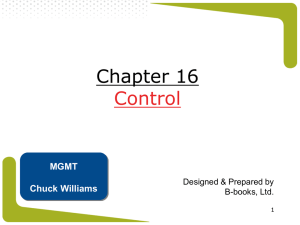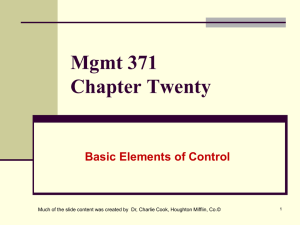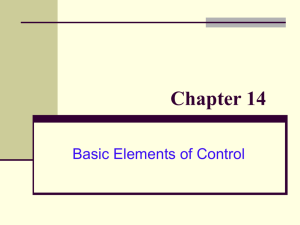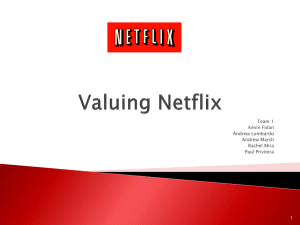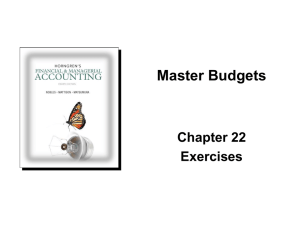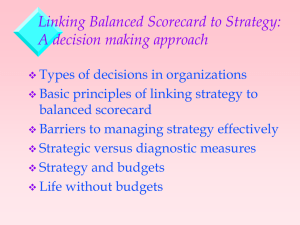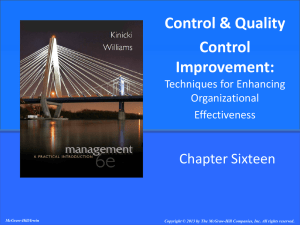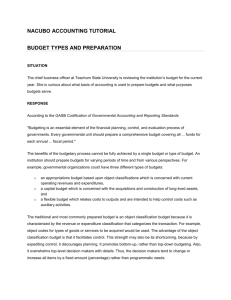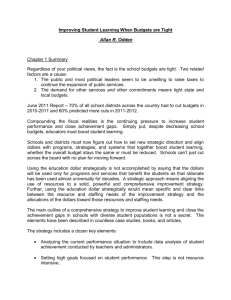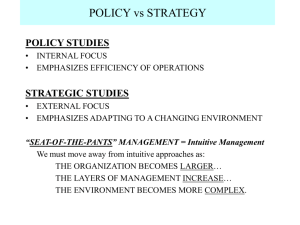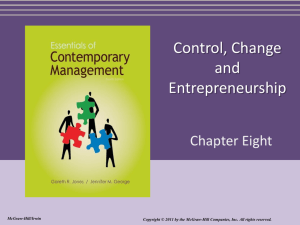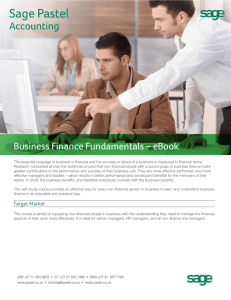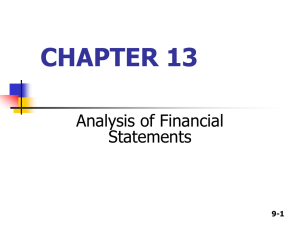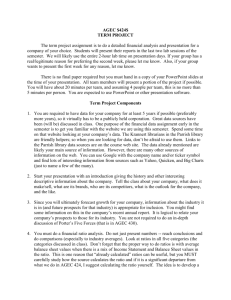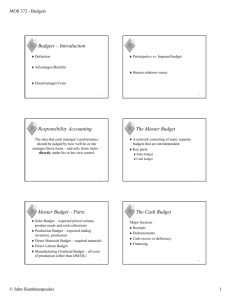CHAPTER 19 ESSAY TOPICS
advertisement
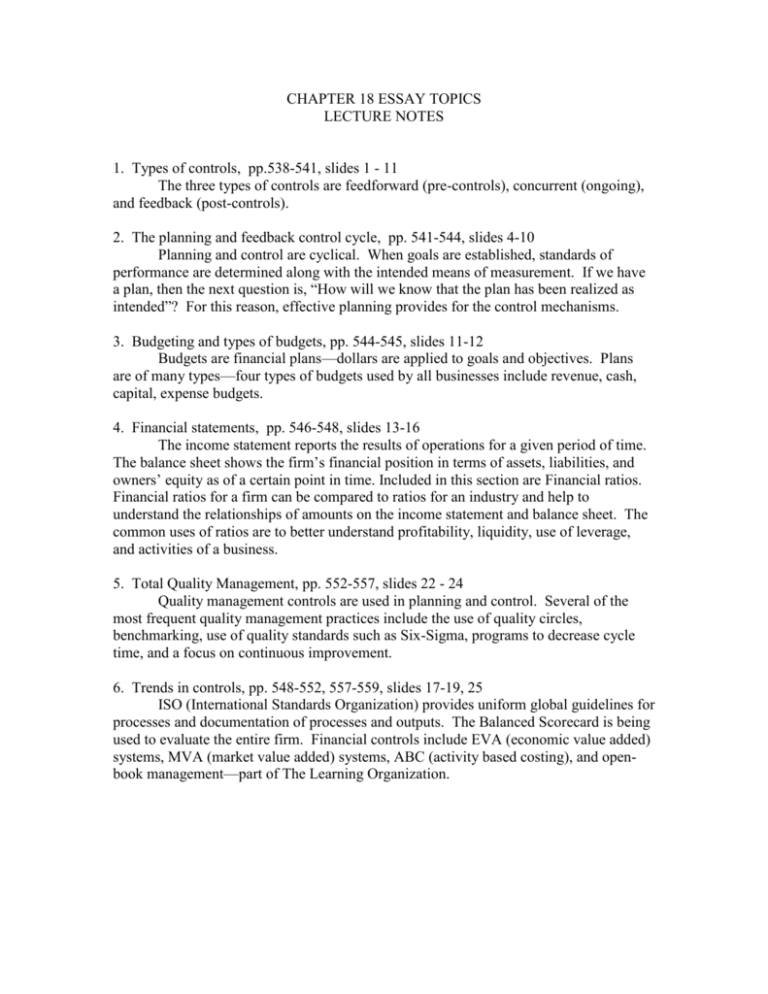
CHAPTER 18 ESSAY TOPICS LECTURE NOTES 1. Types of controls, pp.538-541, slides 1 - 11 The three types of controls are feedforward (pre-controls), concurrent (ongoing), and feedback (post-controls). 2. The planning and feedback control cycle, pp. 541-544, slides 4-10 Planning and control are cyclical. When goals are established, standards of performance are determined along with the intended means of measurement. If we have a plan, then the next question is, “How will we know that the plan has been realized as intended”? For this reason, effective planning provides for the control mechanisms. 3. Budgeting and types of budgets, pp. 544-545, slides 11-12 Budgets are financial plans—dollars are applied to goals and objectives. Plans are of many types—four types of budgets used by all businesses include revenue, cash, capital, expense budgets. 4. Financial statements, pp. 546-548, slides 13-16 The income statement reports the results of operations for a given period of time. The balance sheet shows the firm’s financial position in terms of assets, liabilities, and owners’ equity as of a certain point in time. Included in this section are Financial ratios. Financial ratios for a firm can be compared to ratios for an industry and help to understand the relationships of amounts on the income statement and balance sheet. The common uses of ratios are to better understand profitability, liquidity, use of leverage, and activities of a business. 5. Total Quality Management, pp. 552-557, slides 22 - 24 Quality management controls are used in planning and control. Several of the most frequent quality management practices include the use of quality circles, benchmarking, use of quality standards such as Six-Sigma, programs to decrease cycle time, and a focus on continuous improvement. 6. Trends in controls, pp. 548-552, 557-559, slides 17-19, 25 ISO (International Standards Organization) provides uniform global guidelines for processes and documentation of processes and outputs. The Balanced Scorecard is being used to evaluate the entire firm. Financial controls include EVA (economic value added) systems, MVA (market value added) systems, ABC (activity based costing), and openbook management—part of The Learning Organization.
